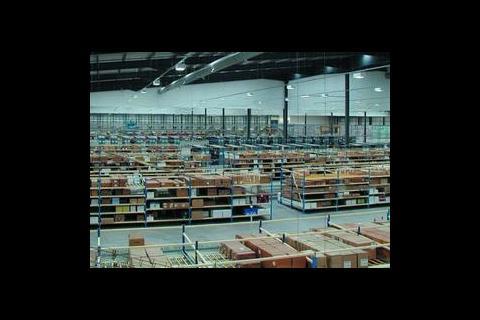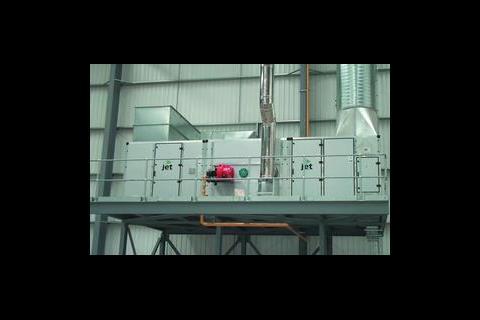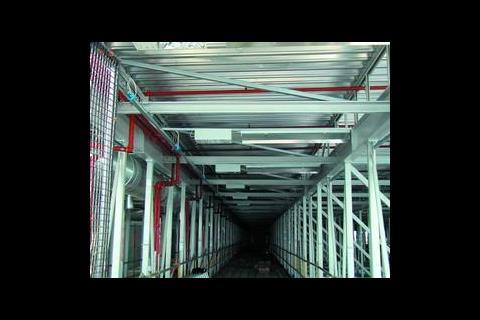Whether you are specifying a heating system for a new-build development or are looking to replace an existing hvac set up in a refurbishment project, consideration of key issues can help ensure you choose an energy-efficient solution, while minimising operational costs.
First, it is important to consider the type of building involved, since warehouses are invariably complex environments with mezzanine floors, loading bays and dense racking which are likely to demand a range of temperatures throughout the operational space. Access to the space for maintenance is key to the decision making process, as is the method of building construction and any requirement to co-ordinate the hvac system around ancillary services.
The kind of activity conducted within the building also has a bearing on the choice of hvac system. Do regulatory conditions apply regarding the processing or storage of products, for example, or does the hvac solution need to incorporate a provision for make up air or specific cooling?
Also pay attention to the needs of your workforce. Are they likely to be working in close proximity to the source of heat? Are rapid response temperature recovery in loading bays or the comfort of employees working in picking stations key factors? Do you need to provide fresh air or merely offset internal heat gains?
Since floor space is extremely valuable, it makes sense to choose a system which takes up as little floor area – as well as racking space – as possible. A system which allows for the plant and ductwork to be located outside the operational area and which can be installed around ancillary services such as lighting and sprinklers is more suitable.
Air induction-based heating, for example, is particularly well suited to facilities where space is at a premium since the system is essentially confined to high level, 'wasted' roof space, which is not the case with floor standing air unit heaters.
Air distribution
As racking becomes denser, even distribution of air around buildings is important. This can be particularly pertinent to certain processing environments, where regulations demand that the temperature throughout the operating space must be maintained at a specific level. Difficulties can arise with heating and ventilation systems which rely on a small number of terminal devices since these cannot be located in narrow aisles. Meanwhile, systems which utilise numerous small outlets to distribute air down the racking aisles deliver temperature levels which are extremely even.
We are all aware how warehouse developments are increasingly being built to greater heights and the need to avoid temperature stratification. Energy management can be improved by entraining and recycling waste heat, so hvac systems which are designed to recover waste heat from machinery or lights offer the most efficient way of minimising horizontal and vertical temperature gradients within a space, avoiding the need to introduce additional heat load to compensate for gradient losses.
Air induction solutions enable operators to achieve optimum climate control in this way, whereas unit heaters or radiant systems require the installation of separate fans to overcome temperature stratification.
In today's state-of-the-art warehouses, a build up of internal heat results from greater use of mechanical handling equipment (mhe). These systems give off heat from numerous electric motors and, given the higher levels of insulation and air tightness required following the introduction of the 2002 Part L Building Regulations, are responsible for generating significant internal heat.
As a result, operators should consider ventilation to limit summer time temperatures for the comfort of the building's occupants as well as the continued efficiency of the mhe and the warehouse facility as a whole.
Where offsetting internal heat gains is the main objective, some hvac solutions, such as air induction systems, can be sized to supply air which is a mix of recirculated air combined with a quantity of fresh air to provide an economic method of ambient cooling. This cannot, however, be achieved with systems which generally operate on a full-recirculated air basis or, in the case of radiant systems, no fresh air at all.
For ambient stores where heating is not an issue and a wet sprinkler system is installed, the question is how to adequately protect the sprinkler system to prevent it freezing at times of low ambient temperatures.
In choosing an hvac solution to meet these criteria, the air supplied needs to offer a high degree of coverage and deliver minimal stratification. If all areas of the warehouse are not protected, there is a potential risk of cold spots which could have disastrous results.
Trace heating the sprinkler system is one way of securing frost protection, although this involves higher maintenance levels, while there are protection issues with insulation which is easily damaged. With the other alternative, a dry sprinkler system, response time is a key factor.
Maintenance
The type of hvac system will determine the cost and operational disruption to the warehouse from routine system maintenance.
Every operator's ideal is simple, low cost maintenance, preferably contained at a single point. But the reality is that plant can be spread across several sites and installed at high level in inaccessible locations. In such instances, especially where a large number of serviceable items are mounted at high level throughout the space, disruption can be considerable. Expensive scaffolding or access equipment will be needed to provide a safe working platform and, in congested areas, access within working zones will be difficult making it necessary to halt production to comply with health and safety regulations.
Maintenance can therefore become an intrusive and costly process. It may not even be viable for some types of distribution centre – especially those which operate 24/7 – to accommodate prolonged periods of downtime. Operators therefore need to be fully aware of the impact of routine maintenance and how it can add to operational costs through loss of productivity.
It is clear that heating and ventilation systems which allow for the equipment to be located in a separate plant room – removing the need to enter the operational space for maintenance or to replace major components – offer valuable commercial benefits. In effect, maintenance becomes a simple, quick and cheap activity which need not adversely affect overall facility performance.
Life cycle costs
The introduction of the Climate Change Levy automatically added 7% to warehouse operators' fuel bills as of April 2002. Clearly, the more energy-efficient a heating and ventilation system is, the less of an impact this new tax will have.
A short-term approach is not appropriate when making an investment in industrial heating which may be expected to last for 30 years or more. Operators are advised to evaluate all the costs involved when specifying a hvac solution as opposed to basing the decision on the initial capital cost alone.
The whole life costs calculation must take into account the following:
- capital cost of the system;
- capital cost of the associated services;
- fuel costs;
- maintenance;
- life expectancy and replacement costs;
- loss of production.
Comparing the capital cost of alternative hvac systems is not enough. The type, quality and thermal efficiency of a heating system will have a far greater influence on the lifetime costs of a building than its initial capital cost, which can represent less than 10% of the hvac system's whole life costs.
An air induction system may not be the lowest capital cost option, for example, but it may be the most cost competitive and effective choice when taking quality and efficiency into account, together with the cost of associated services.
With a central plant location, associated services are reduced to a minimum. Unit heaters, radiant strip and destratification fans will give rise to significant electrical and pipework distribution costs, while the additional costs associated with gas-fired units are in the form of building work to provide penetrations for flues and other such needs.
Businesses often fail to realise that the majority of heating costs relate to the amount of energy used and the price they are paying for it, followed by the Climate Change Levy and maintenance costs and replacement parts. The fuel cost associated with indirect gas fired units is only one aspect of an assessment of energy consumption. Electrical energy is also required – to drive the supply fan(s) and distribute the heat to the space – so greater thermal efficiency can be derived from heater units which are designed to minimise internal friction and dynamic losses by careful selection of filter type, fan selection and heat exchanger design. A ductwork distribution system can be purpose-designed to avoid excessive friction losses, while air induction systems offer tremendous potential for energy savings, since they tend to operate at lower system pressures than other methods of heating.
Source
Building Sustainable Design
Postscript
Steve Ball is general manager at industrial heating and ventilation specialist Jet Environmental. For more information see www.jetenvironmental.com























No comments yet